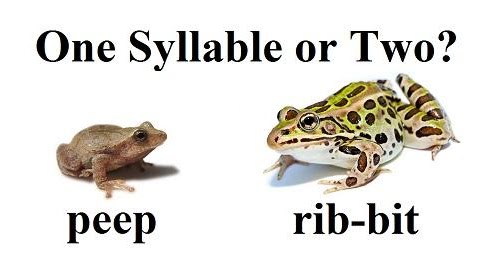Chapter 4: Phonics
What Are Phonics?
When you were young and first learning to read, most of you probably learned using a combination of sight words and phonics.
Sight words were words learned on sight. When first learning to read, these were words like “dog,” “cat,” and “sit.” As you became more advanced readers, you learned to recognize words like “immediately,” “process,” and “thought” on sight—without having to sound them out.
So as you continue to grow as readers, what should you do when you get to a word you don’t know on sight? This is when you need phonics to help sound it out!
Phoneme
The sounds that vowels and consonants make are called phonemes.
The English language is made up of 26 letters. Those consonants and vowels make 44 sounds. Your ability to recognize those sounds is important to your ability to read.
Phonemic Awareness
Our ability to identify letters and the sounds they make is our phonemic awareness. We want to learn some simple phonics to help increase phonemic awareness and learn how to pronounce words we don’t know. This will increase confidence as we read.
Click and Speak Chart
Use This Chart to Hear the 39 Most Common English Language Sounds
How to Read Words We Don’t Know
Syllables
Syllables are the building blocks of words. There is one vowel sound in each syllable which corresponds to a single rhythmic unit, or beat, when spoken. You may remember clapping to help count syllables (ed-u-ca-tion). Paying attention to syllables helps us learn new languages, read and write poetry, and pronounce unfamiliar words.
- Open syllables have long vowel sounds, most often ā, ē, ī, ō, ū, and sometimes ȳ.
Examples: cāke, wēek, wīde, thōugh, mūte, skȳ
- Closed syllables have short vowel sounds, most often ă, ĕ, ĭ, ŏ, ŭ, and sometimes ӳ.
Examples: căt, trĕk, mĭmĭc, clŏck, mŭtt, mӳth
Accent Marks
Accent marks help us see which syllables should be stressed, or spoken more forcefully, in order to pronounce them correctly. The accent mark comes directly before or after the stressed syllable. If there is a secondary stressed syllable, it is sometimes smaller and sometimes marked below the syllable.
-
teacher: teach´-er
-
photographic: phoˌ-to- graˈ-phic
-
international: in`-ter-na´-tion-al
-
categorization: cat`-e-go-ri-za´-tion
-
education: ed`-u-ca´-tion
-
celebration: cel`-e-bra´-tion
Nouns: Stress is typically on the first syllable.
-
Nouns are words that identify people, places, things, or ideas in a sentence.
Verbs: Stress is usually on the second syllable.
- Verbs are words that describe actions, occurrences, or states of being.
Examples
Record
Rĕc´-ord (noun: a document or account)
Rĕ-córd (verb: to write down)
Export
Ĕx´-port (noun: goods sent abroad)
Ĕx-pórt (verb: to send goods abroad)
Project
Prŏj´-ect (noun: a plan or task)
Prŏ-jéct (verb: to throw forward or plan)
-
Present: Prĕs-ent (noun; a gift)
-
Present: Prĕ-sent (verb: to offer)
-
Contract: Cŏn-tract (noun: a binding agreement)
-
Contract: Cŏn-tráct (verb: to reduce in size)
Let’s try pronouncing some trickier words with the help of vowel markings, syllables, and accent marks.
-
caveat: ˈcav-ēˌ-ät
-
sycophant: Sĭc´-ō-phănt
-
obfuscate: Ŏb´-fŭs-cāte
-
Ebullient: Ĕ-bŭl´-yĕnt
Practice 1.1
Phonics is an essential tool for decoding complex words by breaking them into their phonetic components and applying basic sound-spelling rules. For example, the word debilitate can be deciphered by recognizing its syllables: de-bil-i-tate. Similarly, proliferate follows a straightforward pattern, with the stress on the second syllable, guiding the pronunciation as pro-lif-er-ate. The word infallible adheres to phonetic rules as well, with each vowel producing its expected sound within the syllables in-fal-li-ble. Words like reverberate and ameliorate can initially seem intimidating, but careful application of phonics principles, such as dividing them into syllables and sounding out each part, makes them manageable. Phonics empowers readers to navigate even challenging vocabulary by emphasizing systematic decoding strategies.
Starting college was an exhilarating yet formidable endeavor, fraught with an amalgamation of anticipation and trepidation. As I navigated the labyrinthine corridors of academia, I encountered an array of esoteric terminologies—syllabus, curriculum, and matriculation—each demanding meticulous attention to decode. The conviviality of my peers was both comforting and disorienting, as our conversations often oscillated between pedagogical musings and lighthearted repartee. Adjusting to the rigorous expectations of collegiate life necessitated a profound commitment to discipline and perseverance. Despite the occasional cacophony of challenges, I found solace in the burgeoning camaraderie and the inexorable sense of intellectual growth that college promises.
Attributions
Strengthening Reading and Comprehension by Audrey Cross and Katherine Sorenson is licensed under CC BY-NC 4.0
Media Attributions
- Image of Frogs © Audrey Cross and Katherine Sorenson
(fŏn-ĭks), n. - A method of teaching reading by correlating sounds with letters or groups of letters.

